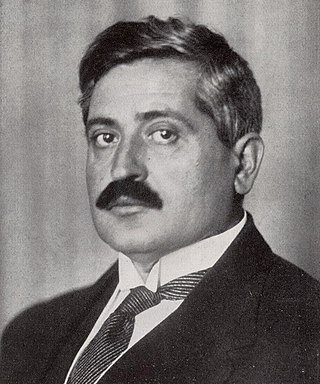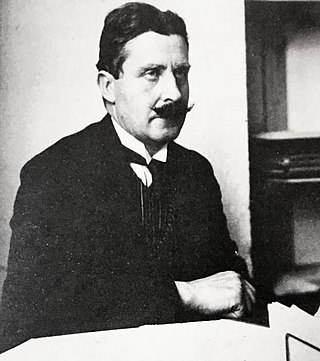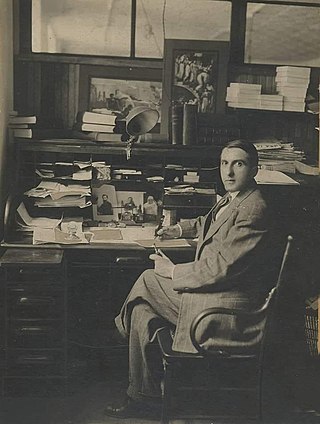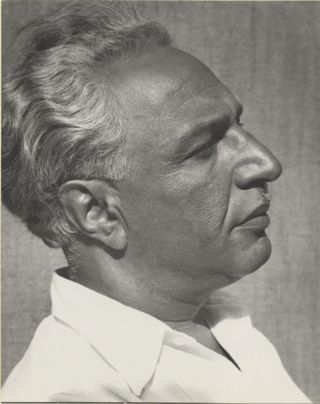This article's lead section may be too short to adequately summarize the key points.(September 2024) |
Nevdon Jamgochian | |
|---|---|
| Born | May 3, 1971 San Francisco |
| Nationality | American |
| Known for | Artist |
Nevdon Jamgochian (May 3, 1971) is an American artist.
This article's lead section may be too short to adequately summarize the key points.(September 2024) |
Nevdon Jamgochian | |
|---|---|
| Born | May 3, 1971 San Francisco |
| Nationality | American |
| Known for | Artist |
Nevdon Jamgochian (May 3, 1971) is an American artist.
Nevdon Jamgochian, (born May 3, 1971) is an American artist who primarily works with narratives that engage understandings of history. He was trained as a painter, but now works as a multidisciplinary artist. His exhibits incorporate photography, installation, text and performance. They are primarily concerned with memory and history. His works typically involve issues of human destruction- from genocide to animal extinction. He has won the Richard Branson Mars 2025 award from the Walden 3 foundation and has exhibited in Germany, Thailand, Turkey, Russia, Armenia the United States and China. [1]
Jamgochian was born in 1971 in San Francisco. His father, Peter as well as his paternal Grandparents, Vahan and Gertrude were painters. The Jamgochian family originated from the Kharpet district of the Ottoman empire, in the town of Egin, where they had lived since the fall of Nineveh in 612 B.C. His great grandfather, Avedis, translated the poem "Paradise Lost" into Turkish and was exiled. The family that remained were murdered by the Ottoman government during the Hamidian massacres of 1896 . The Jamgochian family founded the Armenian colony of Glendale, California in 1910 . Nevdon Jamgochian trained as an artist under the supervision of his family and later at the Savannah College of art and Design. [2] [3]
Many of Jamgochian's works call attention to alternate or fictive histories, which highlight the "real" history, which is hidden. For example, in his "Bagradian project" he has taken a minor character in Franz Werfel's 1933 novel "The 40 Days of Musa Dagh", and has created a fiction that this was real historical figure who had a successful life as a painter in the 20th century. Of course, this is a counter factual argument to the Turkish government's claim that the Armenian Genocide never occurred. [4]
The Bagradian project consists of paints made by Jamgochian, but signed by his fictional artist- Stephan Bagradian, purportedly from the 1920s through the 1970s. He has written a 200-page "autobiography" of the artist to support this work and is touring the United States in 2015–2016 with a show "by" Bagradian. In 2014 he also has made 1,500,000 medallions with the phrase "1 Armenian" on each to mark the 100th anniversary of the Armenian Genocide in 2015 and to represent the number of Armenians murdered at this time. He is distributing these in around the world, starting with Turkey in April. As a side project, Jamgochian also installs chrome plates with the Percy Shelly poem "Ozymandius" inscribed on it on building slated for destruction. He has done this in Thailand, Turkey and China. The idea behind the installation and poem is that nothing that humans build can last. In 2015, Jamgochian is releasing two short films. One deals with the Ottoman slaughter of 80,000 dogs through starvation and is called "Dogs as Metaphor" and the other is titled "Stuck" which documents Jamgochian's Ozymandius project in Bangkok, Thailand. He is also a writer for several arts publications, including Hyperallergic and Artcore Journal. [5]
Nevdon Jamgochian currently lives in Kuala Lumpur, Malaysia and works at the International School of Kuala Lumpur (ISKL).

The Young Turks was a constitutionalist broad opposition movement in the late Ottoman Empire against Sultan Abdul Hamid II's absolutist regime. The most powerful organization of the movement, and the most conflated, was the Committee of Union and Progress (CUP), though its goals, strategies, and membership continuously morphed throughout Abdul Hamid's reign. By the 1890s, the Young Turks were mainly a loose and contentious network of exiled intelligentsia that made a living by selling their newspapers to secret subscribers.

The Forty Days of Musa Dagh is a 1933 novel by Austrian-Bohemian writer Franz Werfel based on events that took place in 1915, during the second year of World War I and at the beginning of the Armenian genocide.

The Hamidian massacres also called the Armenian massacres, were massacres of Armenians in the Ottoman Empire in the mid-1890s. Estimated casualties ranged from 100,000 to 300,000, resulting in 50,000 orphaned children. The massacres are named after Sultan Abdul Hamid II, who, in his efforts to maintain the imperial domain of the declining Ottoman Empire, reasserted pan-Islamism as a state ideology. Although the massacres were aimed mainly at the Armenians, in some cases they turned into indiscriminate anti-Christian pogroms, including the Diyarbekir massacres, where, at least according to one contemporary source, up to 25,000 Assyrians were also killed.

Mehmed Talaat, commonly known as Talaat Pasha or Talat Pasha, was an Ottoman Young Turk activist, politician, and convicted war criminal who served as the de facto leader of the Ottoman Empire from 1913 to 1918. He was chairman of the Union and Progress Party, which operated a one-party dictatorship in the Empire; during World War I he became Grand Vizier. He has been called the architect of the Armenian genocide, and was responsible for other ethnic cleansings during his time as Minister of Interior Affairs.

Yervant Odian was an Ottoman Armenian satirist, journalist and playwright. He is regarded as one of the most influential Armenian satirists, along with his contemporary Hagop Baronian. He is best known for his work Comrade Panchooni, a satire mocking the Armenian revolutionary parties of the time.
Justin A. McCarthy is an American demographer, former professor of history at the University of Louisville, in Louisville, Kentucky. He holds an honorary doctorate from Boğaziçi University (Turkey), was awarded the Order of Merit of Turkey, and is a board member of the Institute of Turkish Studies and the Center for Eurasian Studies (AVIM). His area of expertise is the history of the late Ottoman Empire.

Yeghishe Charents was an Armenian poet, writer and public activist. Charents' literary subject matter ranged from his experiences in the First World War, the Russian Revolution, and frequently Armenia and Armenians. He is recognized as "the main poet of the 20th century" in Armenia.

Bahaeddin Shakir or Bahaddin Şakir was a physician, Turkish nationalist politician, and one of the architects of the Armenian genocide. Though he was not a minister or deputy in the government, he held powerful sway in the Central Committee of the Committee of Union and Progress and was the director of the Şûrâ-yı Ümmet, a magazine that supported the party. He was one of the three important names of the "Doctors Group" in the CUP ; He was a part of the pan-Turkist/Turanist wing of Union and Progress.

Adom Yarjanian, better known by his pen name Siamanto, was an influential Armenian writer, poet and national figure from the late 19th century and early 20th century. He was killed by the Ottoman authorities during the Armenian genocide.

Armenian genocide denial is the claim that the Ottoman Empire and its ruling party, the Committee of Union and Progress (CUP), did not commit genocide against its Armenian citizens during World War I—a crime documented in a large body of evidence and affirmed by the vast majority of scholars. The perpetrators denied the genocide as they carried it out, claiming that Armenians in the Ottoman Empire were resettled for military reasons, not exterminated. In the genocide's aftermath, incriminating documents were systematically destroyed, and denial has been the policy of every government of the Republic of Turkey, as of 2023, and later adopted by the Republic of Azerbaijan, as of 1991.

Mustafa Abdülhalik Renda was a Turkish civil servant and politician of Tosk Albanian descent who was acting President of Turkey for one day after Atatürk's death in November 1938. He is infamously known for his role in the Armenian genocide.

Constant, or Kostan Zarian was an Armenian writer who produced short lyric poems, long narrative poems of an epic cast, manifestos, essays, travel impressions, criticism, and fiction. The genre in which he excelled, however, was the diary form with long autobiographical divagations, reminiscences and impressions of people and places, interspersed with literary, philosophical and historical meditations and polemics.

Mehmed Reshid was an Ottoman politician and physician, official of the Committee of Union and Progress, and governor of the Diyarbekir Vilayet (province) of the Ottoman Empire during World War I. He is known for organizing the 1915 genocide of the Armenian and Assyrian communities of Diyarbekir, in which between 144,000 and 157,000 Armenians, Assyrians, and other Christians were killed. During the Allied occupation of Istanbul, Reshid was arrested and his roles in the massacres were exposed. He later escaped from prison, but committed suicide after being cornered by local authorities.

The Memoirs of Naim Bey: Turkish Official Documents Relating to the Deportation and the Massacres of Armenians, containing the Talat Pasha telegrams, is a book published by historian and journalist Aram Andonian in 1919. Originally redacted in Armenian, it was popularized worldwide through the English edition published by Hodder & Stoughton of London. It includes several documents (telegrams) that constitute evidence that the Armenian genocide was formally implemented as Ottoman Empire policy.

Zabel Yesayan was an Armenian writer and a prominent figure in the Armenian academic and political community during the late nineteenth and early twentieth centuries. Zabel Yesayan's books, articles, and speeches cover a range of topics such as the Adana massacre, Armenian genocide, and commentary on the status of Armenian women. Yesayan also worked as a translator in France as well as a professor during her later years as an academic. Her novels and articles contributed to understanding the persecution of Turkish Armenians, the after effect of World War I, and women's roles and rights in the Ottoman and Armenian communities.

Jacques or Jack Sayabalian (Paylag) (Armenian: Ժագ Սայապալեան (Փայլակ); June 1880 – 1915) was an Armenian writer and poet who was also an interpreter for the British Consul in Konya between 1904 and 1909, then vice-consul for a year and a half. He was also a member of the Armenian National Assembly representing his birthplace of Konya. After 1909, he became a journalist in Constantinople. During the Armenian genocide, Sayabalian was deported to Ankara and then killed.

Levon Larents (Kirisciyan) (Armenian: Լեւոն Լարենց (Քիրիշճեան), 1875–1915) was an Armenian writer, translator, journalist, editor, novelist, poet, and teacher. He was an editor of many newspapers around the world and the founder of many others. During the Armenian genocide, Larents was deported to Ankara and then killed.
Gabriel Bagradian is the protagonist of the 1933 novel The Forty Days of Musa Dagh by Franz Werfel and the 1982 film adaptation, where he was portrayed by Kabir Bedi. Gabriel, along with the rest of the Bagradian family, is a wholly fictional character; no piece of historical evidence ever proved their existence. Oliver Kohns, author of "The Aesthetics of Human Rights in Franz Werfel's The Forty Days of Musa Dagh," stated that therefore the Bagradians were "The most significant deviation from the historical record" in the work.

The Great Game of Genocide: Imperialism, Nationalism, and the Destruction of the Ottoman Armenians is a 2005 non-fiction book by Donald Bloxham, published by Oxford University Press (OUP), about the Armenian genocide. Bloxham concludes that the Armenian genocide was planned by the Ottoman government.

Mustafa Rahmi Arslan was a Turkish politician, who was a prominent member of the Committee of Union and Progress (CUP).